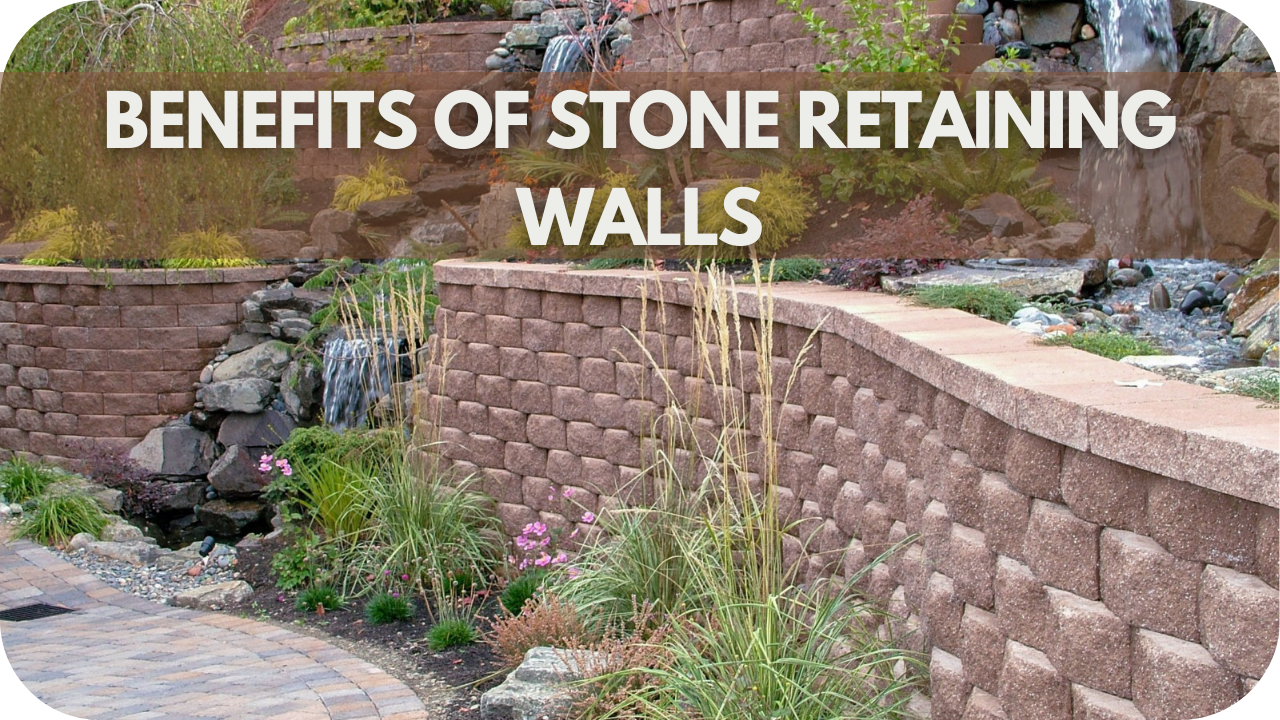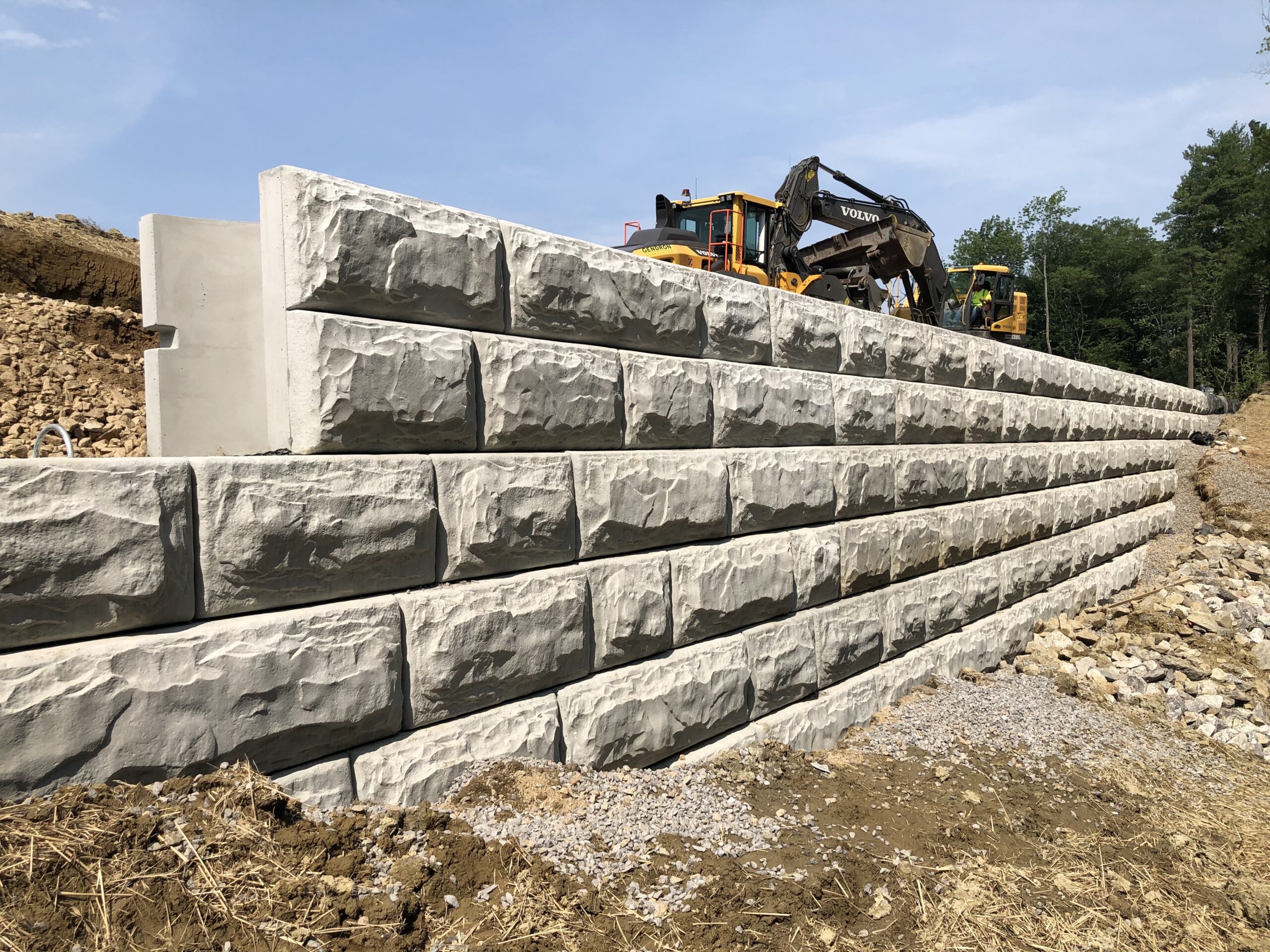Why OKC Precision Retaining Walls are essential for stabilizing uneven land
Why OKC Precision Retaining Walls are essential for stabilizing uneven land
Blog Article
Trick Considerations for Structure Reliable Retaining Walls in Your Yard
When you're considering building a keeping wall in your lawn, it's important to think concerning a number of essential aspects. The wall surface's purpose, the products you'll utilize, and the specific dirt conditions can all affect its efficiency and longevity. You'll likewise need to browse regional building regulations and prepare for proper drainage. Just how do you ensure your design not only satisfies these requirements however additionally improves your landscape? Let's explore the crucial steps with each other.
Recognizing the Purpose of Your Retaining Wall
When you consider developing a keeping wall surface, consider its main purpose: maintaining dirt and avoiding erosion. Retaining walls provide crucial support for sloped landscapes, assisting to preserve dirt integrity. You'll find they're crucial in locations where water runoff might otherwise get rid of dirt, leading to costly repair services and landscape damages.
By keeping back earth, these walls create level surfaces for gardens, outdoor patios, or paths. This not just boosts your yard's appearances yet likewise promotes far better water drainage, reducing water pooling in unwanted areas. If you're dealing with steep slopes, a sound retaining wall surface can stop landslides, making sure safety and security for you and your residential property.
Inevitably, understanding the function of your retaining wall surface will direct your style decisions and help you create a functional, resilient structure that meets your demands. Take a moment to evaluate your landscape; it'll pay off in the long run.
Selecting the Right Products
When choosing products for your retaining wall surface, you'll wish to take into account toughness, appearances, and expense. Each factor plays a crucial function in ensuring your wall surface stands the examination of time while looking fantastic and fitting your budget. Let's explore just how to make the ideal selections for your task.
Material Resilience Aspects
Selecting the best products is crucial for the durability and performance of your retaining wall surface, because their durability straight affects the wall's capability to endure ecological anxieties. Start by considering your local environment; materials like concrete and stone resist moisture and temperature fluctuations well. If you live in a location prone to hefty rainfalls, select products with excellent drain residential or commercial properties, like gravel or permeable blocks, to stop water build-up.
Some products execute much better in details soil types, so it's essential to match them appropriately. Picking sturdy products assurances your retaining wall surface stands solid, shielding your yard for years to come.
Aesthetic Design Choices
Durable materials not only assure your retaining wall surface's structural honesty however likewise play an essential role in its aesthetic allure. When selecting the appropriate materials, consider just how they match your landscape. All-natural stone uses a classic, rustic appearance, while concrete blocks can give a sleek, contemporary surface. You could also take into consideration making use of timber for a warm, natural feeling. Shade and structure matter, too; choose shades that harmonize with your home and garden. Do not forget the wall's form-- curved walls can produce a softer appearance, while straight lines can feel more organized. By carefully choosing products that straighten with your aesthetic vision, you'll enhance your exterior room while ensuring your wall stands strong versus the components.
Cost-Effectiveness Evaluation
Choosing the appropriate products for your retaining wall isn't practically visual appeals; it's additionally necessary for your spending plan. When choosing materials, take into consideration both in advance expenses and lasting sturdiness. Concrete blocks might be pricier initially, yet their longevity can save you money on repair work. On the other hand, timber can be extra affordable but might call for replacement earlier.
Do not neglect to element in maintenance expenses too (OKC Precision Retaining Walls). Some materials, like natural rock, can include appeal and require much less upkeep, while others might require routine treatments
Eventually, consider the advantages and disadvantages of each option versus your budget plan and the wall's designated objective. Spending wisely in products now can stop expensive issues in the future. Pick products that stabilize expense and performance effectively.
Evaluating Soil Problems and Drainage
As you start your job, examining soil problems and water drainage is necessary for the success of your retaining wall. Beginning by examining the kind of soil in your yard. Sandy soil drains pipes well however lacks security, while clay soil can retain wetness, resulting in press on your wall. Examine the soil's wetness material by excavating a little opening and observing how swiftly it dries.
Following, examine the incline of your backyard. If water normally streams toward your wall, you'll require to apply a drainage service to avoid disintegration and pressure accumulation. Consider installing perforated pipelines or crushed rock backfill behind the wall to promote drainage.
Last but not least, observe any type of close-by trees or vegetation; their roots can influence soil stability. By comprehending your soil conditions and implementing appropriate drain, you'll create a solid foundation for your retaining wall that stands the examination of time.
Conforming With Local Building Codes
Prior to you start building your retaining wall, you require to research local policies to guarantee compliance. It's vital to recognize what permits you should acquire, as this can save you from pricey fines or needing to redo your work. Taking these steps seriously will assist you build a you could check here safe and effective framework.
Study Local Rules
Understanding local guidelines is crucial when preparing your retaining wall surface job, especially since building codes can differ substantially by location. Begin by examining with your local structure division or town to find out concerning certain requirements. Try to find guidelines on wall surface elevation, materials, drain systems, and structural honesty. Lots of locations have restrictions on the sorts of materials you can utilize and exactly how high you can build. You'll also wish to consider the zoning legislations that may affect your project. Overlooking these regulations can cause expensive penalties or the demand to remodel your job. By doing your study upfront, you can assure your retaining wall surface fulfills all needed codes and blends seamlessly into your lawn.
Acquire Required Authorizations
As soon as you've investigated regional policies, the next step visit the website is to obtain the essential permits for your retaining wall project. This process guarantees your wall surface abides by building ordinance and safety criteria. Reach out to your neighborhood structure authority to locate out what permits you need. They may require details strategies or design assessments, especially for larger walls. Be prepared to send thorough illustrations, consisting of measurements and products. Do not forget to check if your task affects water drainage or neighboring homes, as these variables might require additional authorizations. Protecting the best approvals can save you from expensive fines or having to dismantle your wall later on. Keep in mind, following the regulations now will certainly result in a smoother building experience.

Planning the Design and Aesthetics
As you begin intending the layout and visual appeals of your retaining wall, think about exactly how it will certainly balance with the bordering landscape. Think of the products you'll use-- stone, brick, or concrete-- and exactly how they'll enhance your home's style and the all-natural components in your lawn. Select colors and textures that blend seamlessly with existing attributes like patio areas, paths, or gardens.
Following, envision the wall surface's shape and elevation. Curved walls can soften a stiff landscape, while straight lines might share an extra contemporary appearance. Do not fail to remember to incorporate plants and greenery around the wall surface for a natural touch; this can enhance its allure and integrate it right into the setting.
Last but not least, keep in mind performance. Your design must not only be aesthetically pleasing but also offer its purpose effectively. By attentively intending these elements, you'll create a retaining wall that boosts your backyard's elegance while fulfilling its architectural function.
Computing Height and Density Demands
To construct a tough retaining wall, you require to precisely compute its elevation and thickness requirements based on the soil problems and the height of the incline it will support. Begin by assessing the slope's angle and the sort of dirt, as different dirts apply differing amounts of pressure.
For walls over 4 feet high, consider a thickness of a minimum of 12 inches. If the wall surface is taller, enhance the density proportionally to keep stability.
Next, determine the height of the wall surface by measuring the vertical range it requires to keep. For every single foot of elevation, you need to generally prepare for a density of one-third of the wall's height.
Always bear in mind to represent added aspects like water drainage and backfill, which can affect your wall's design. Proper calculations currently ensure your retaining wall surface stands solid and lasts for several years ahead.
Upkeep and Durability Factors To Consider
While preserving your retaining wall might look like a reduced priority, overlooking it can result in considerable issues gradually. Regular examinations are vital; look for splits, protrudes, or any indications of water damage. Attending try this site to these troubles early can save you from pricey fixings later on.
Maintain an eye on drain systems, as well. Blocked drains pipes can cause water to construct up, applying pressure on your wall surface and jeopardizing its security. Clear particles and assurance proper flow to keep durability.
You may additionally wish to review securing your wall to secure it from dampness and weathering. Depending upon the material, this could require reapplication every couple of years.
Finally, landscaping around your wall surface can support its integrity. Stay clear of growing big trees close by, as their roots can threaten the foundation. With proactive upkeep, your retaining wall surface can offer you well for several years to find.

Often Asked Concerns
Can I Construct a Retaining Wall by Myself, or Should I Employ a Specialist?
You can most definitely construct a retaining wall surface on your own if you have the right tools and expertise. Employing a specialist guarantees it's done correctly, particularly for bigger or even more complex structures. Consider your skill level before choosing.
What Are one of the most Common Mistakes Made When Building Retaining Walls?
When developing retaining walls, you might forget appropriate water drainage, miss using the best materials, or disregard reinforcement. These usual mistakes can result in structural failure, so take your time and strategy meticulously to avoid problems.
Just how Do I Know if My Retaining Wall Demands Support?
You'll recognize your retaining wall surface requires support if you see splits, leaning, or protruding. Look for water merging behind it or dirt disintegration near the base. Address these indications without delay to protect against more damages.
What Plant kingdom Appropriate for Landscaping Around a Retaining Wall?
When landscaping around a maintaining wall surface, think about utilizing low-maintenance plants like succulents, ornamental lawns, or sneaking ground covers - OKC Precision Retaining Walls. They'll prosper in those conditions and add elegance while protecting against dirt disintegration around your wall
How Can I Prevent Disintegration Around My Retaining Wall?
To stop disintegration around your retaining wall, you can plant ground cover, usage compost, and set up drain systems. Consistently look for water accumulation and adjust landscape design to reroute drainage away from the wall.
Report this page